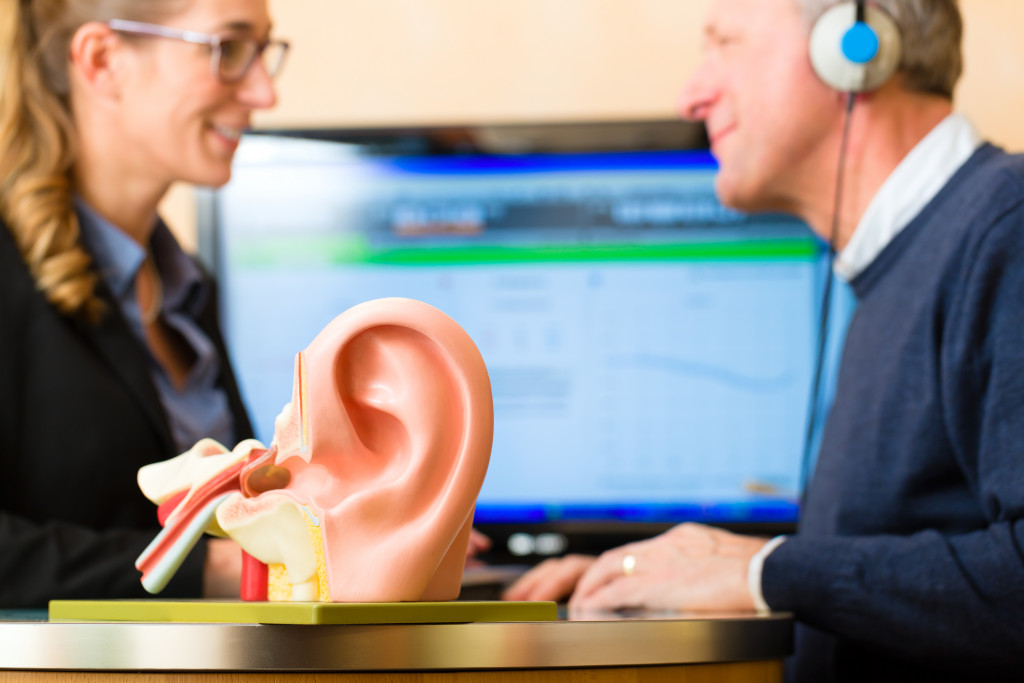- Assistive Listening Technology helps those with hearing impairments by amplifying sound and reducing background noise.
- Virtual Reality applications provide a safe and stimulating environment for those with disabilities or impairments to gain independence.
- Smart home adaptations make it easier to control the environment through voice commands, remotes, and motion sensors.
- Wearable technologies provide solutions for vision and navigation needs, hearing difficulties, and limited mobility.
- Screen readers enable text to be read aloud for those who are visually impaired or blind.
Are you looking for ways to help yourself with a disability or impairment? Fortunately, there are many technologies available today that can do just that. This guide will look at five different types of technologies that you can use if you’re impaired or disabled. Read on to find out more!
1. Assistive Listening Technology
ALT is an essential tool for you if you have hearing impairments. It includes a range of devices that amplify sound and reduce background noise to make it easier for you to hear and understand conversations. ALT can be used in your home, work, or public settings. One example of this type of technology is Teletypewriter deaf communication, a telephone service that allows you to communicate by typing messages back and forth. This technology has proven to be invaluable for those who are hard of hearing or deaf, providing you with an essential bridge to the outside world.
2. Virtual Reality Applications
Virtual Reality (VR) applications can also be an excellent way for individuals with disabilities or impairments to gain independence and autonomy while engaging their senses in a safe and stimulating environment. With VR, you can simulate different activities such as walking, cooking, going to the grocery store, or even participating in sports activities. This allows you to experience these real-world activities, even if you cannot engage in them due to physical limitations or sensory impairments, without any risk of injury.
3. Smart Home Adaptations

Smart home adaptations can be incredibly beneficial for those with physical impairments or disabilities. With these systems, you can control much of your environment through voice commands, remote controls, and even motion sensors. This technology can make it easier to turn on lights, adjust the thermostat, lock doors, open windows, and more—all while still being accessible if you have limited mobility. This technology can significantly improve the quality of life if you deal with physical impairments or disabilities.
4. Wearable Technologies
Wearable technologies can be very beneficial for people with impairments or disabilities, as they offer a variety of functions specific to individual needs. For instance, if you are visually impaired, you might benefit from wearing glasses that act as magnifying glasses. Or, if you have hearing difficulties, you could use headphones that enhance sound and speech recognition. Additionally, if you have limited mobility, a device might be able to help you better navigate your surroundings. No matter the impairment or disability, wearable technologies can make all the difference.
Here are some examples of wearable technologies you can utilize in detail:
Smart Glasses
Smart glasses are designed to help you with your vision and navigation needs, whether you have low vision or blindness. These lightweight devices use cameras and sensors to detect objects around you, giving sound cues and vibrations when needed. Text can be read aloud for easy access to the material. With smart glasses, navigating the world is easier than ever!
Hearing Aids

Hearing aids are designed to amplify sound for you if you have hearing difficulties or impairments. Most modern designs are discreet and comfortable, so you don’t feel like anyone can see or feel uncomfortable. Many also feature noise-canceling technology and directional microphones that ensure you clearly hear the sounds. With a hearing aid, you can be sure that sounds will reach your ears louder and clearer.
Assistive Mobility
Suppose you have mobility or a physical disability. In that case, assistive mobility devices can allow you to explore your environment and enjoy activities without completely relying on others for help. These devices come in lightweight designs that enable portability and easy use, such as wheelchairs or powered scooters. With these effective tools, you can move you’re independently and experience greater freedom.
Wearable Sensors
Wearable sensors are a type of technology developed specifically for you if you have impairments or disabilities. These sensors can be attached to clothing or worn as a piece of jewelry, allowing you to monitor your environment and detect any changes in temperature, sound, light, air quality, or other important aspects of the environment. This technology helps you stay safe and alert when something dangerous is happening. It can provide valuable information that can help you react promptly and possibly prevent potential dangers.
5. Screen Readers
For those who are visually impaired or blind, screen readers can be an invaluable tool. These systems enable text to be read aloud. They can interpret images, symbols, and other visual cues that make it easier for you to understand the material in books, on the internet, and on any other digital platform. With this technology, you can access information the same way as anyone else and have the same access to education and knowledge. Screen readers provide a level playing field that allows you to engage with content like those who can see.
Final Words
These are just some technologies available today that can help you, if you have impairments or disabilities, gain more independence and autonomy. With the right technology, you can access information, resources, and experiences that would otherwise be out of reach. Hopefully, this guide has provided insight into the variety of technologies available and how they might be used to help those who are impaired or disabled.



